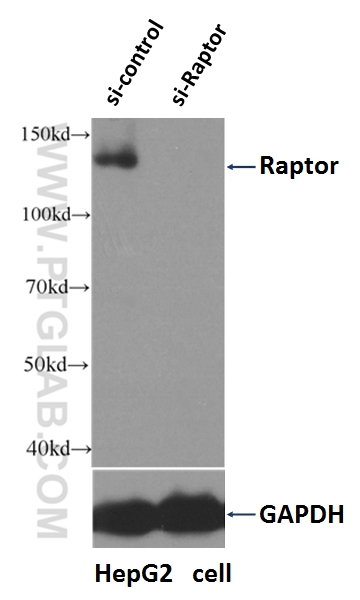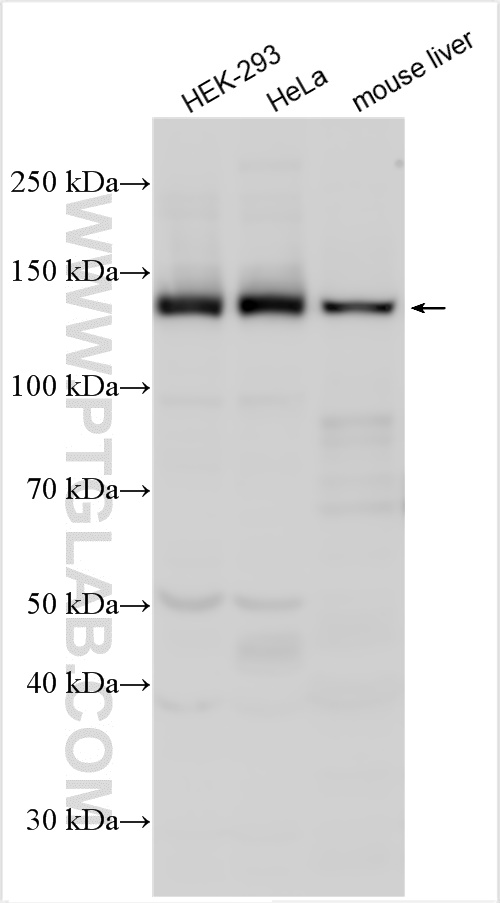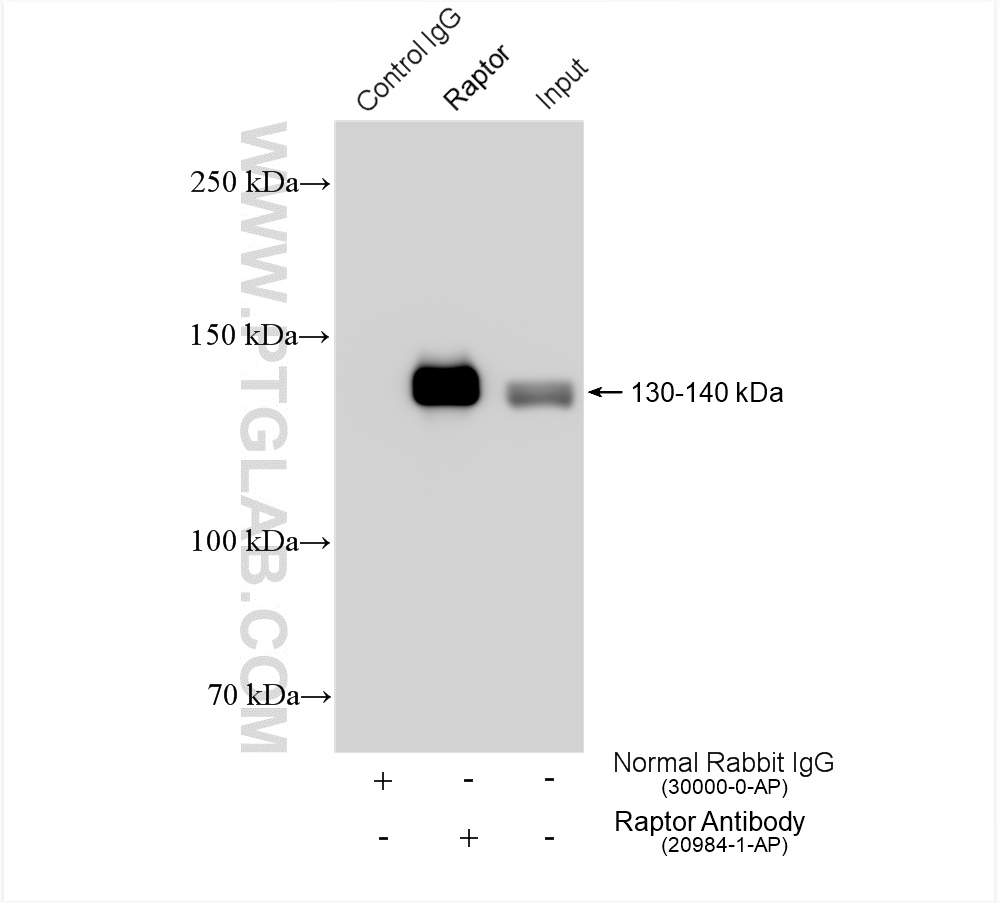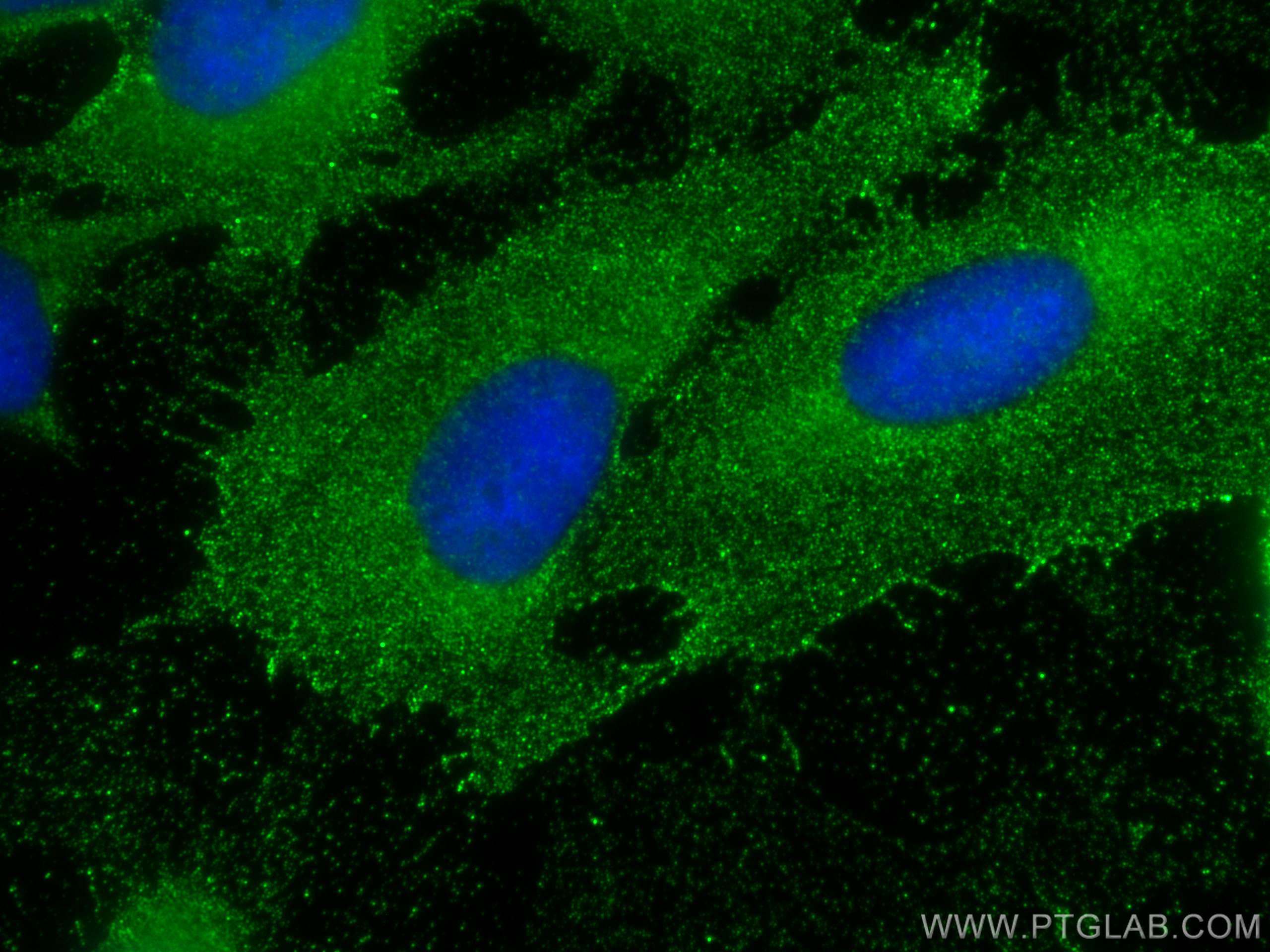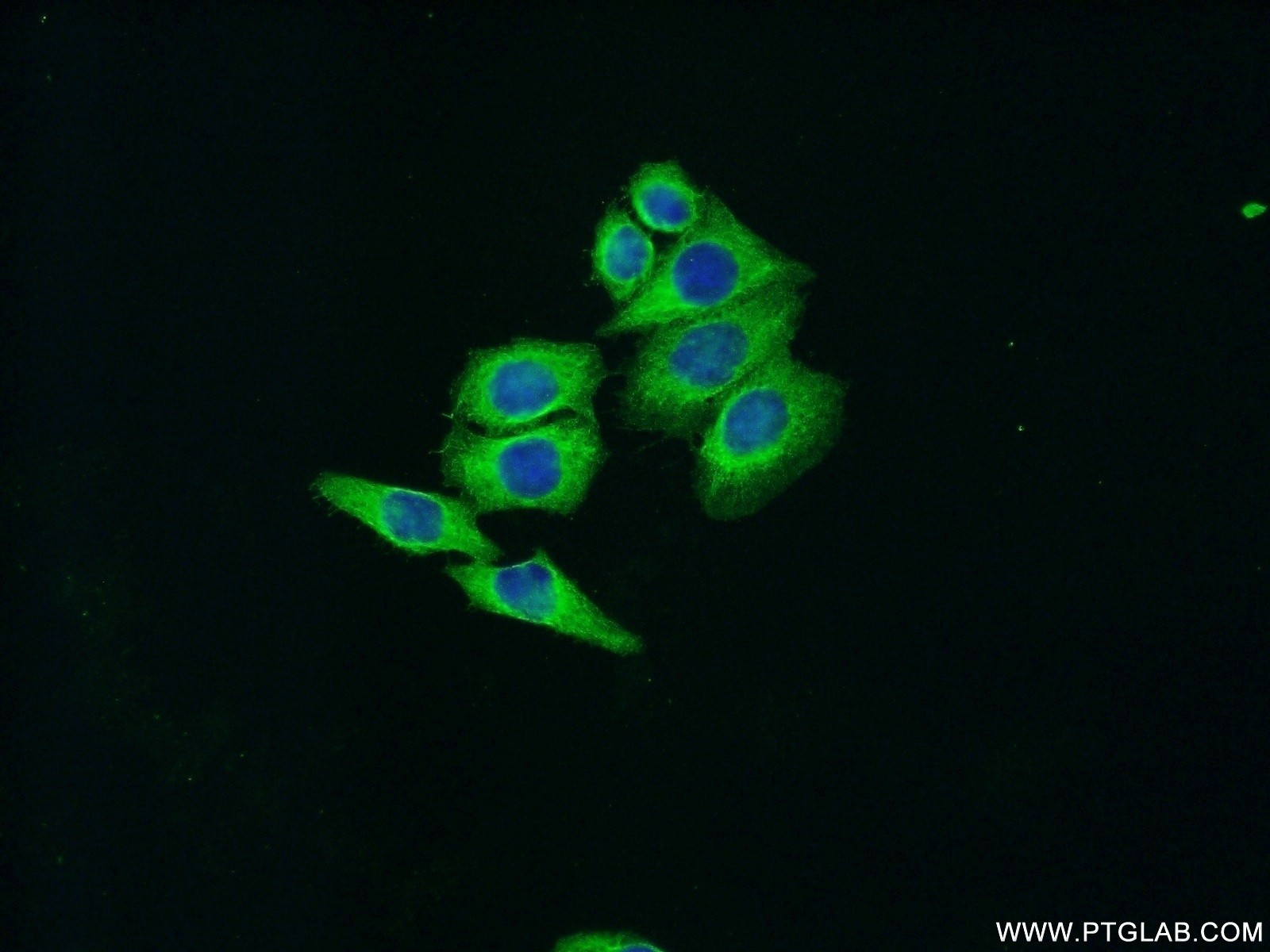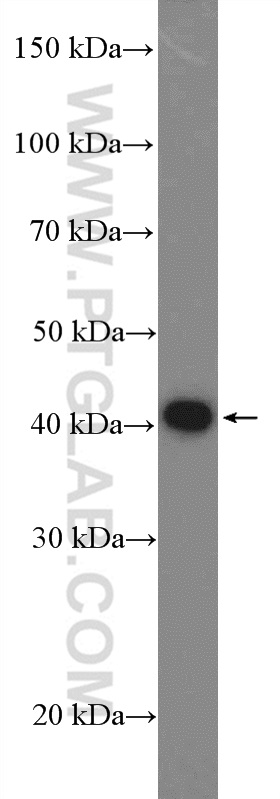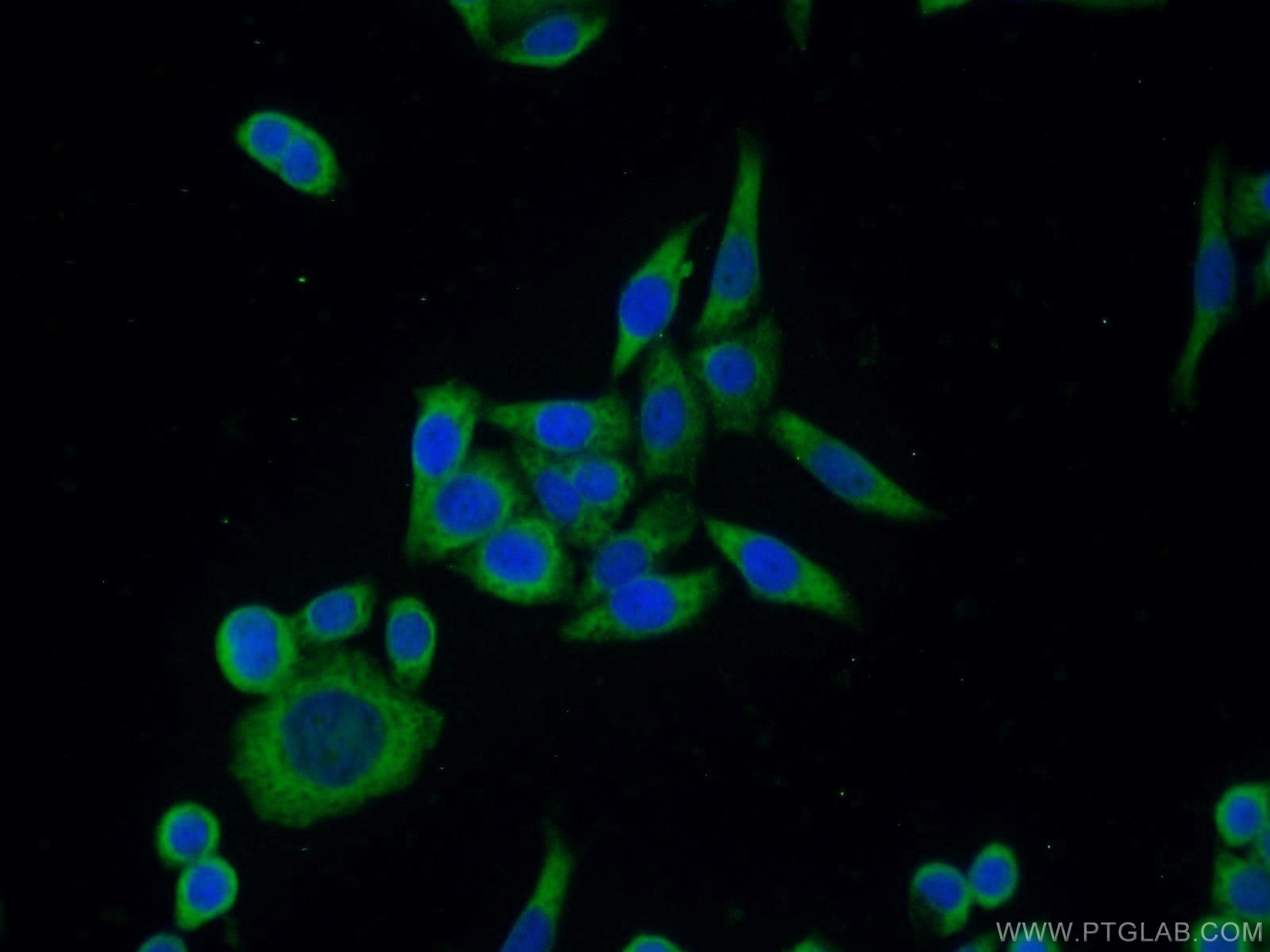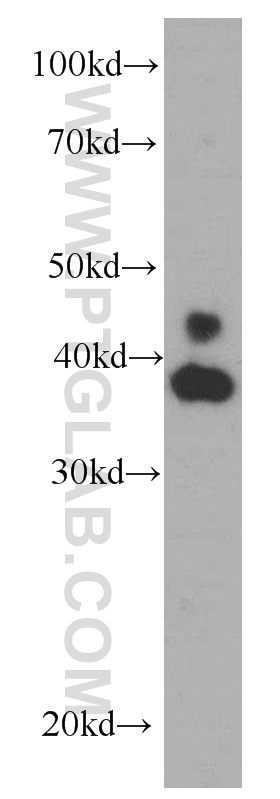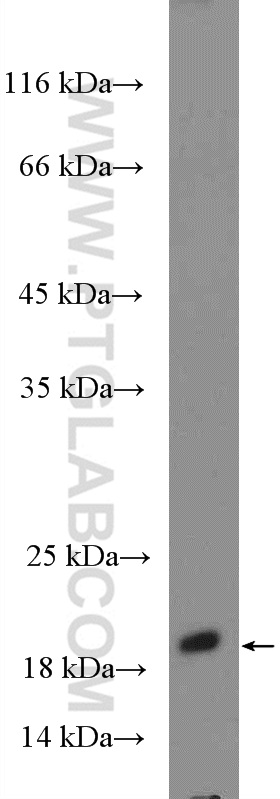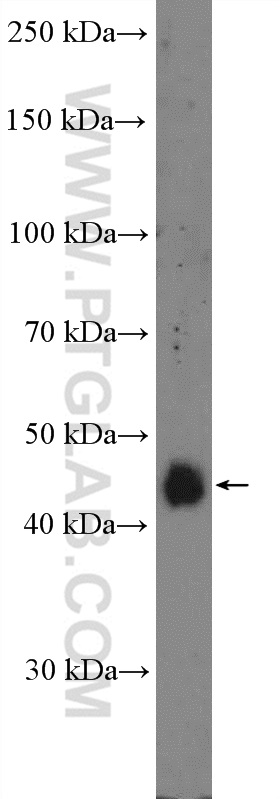- Featured Product
- KD/KO Validated
Raptor Polyclonal antibody
Raptor Polyclonal Antibody for IF/ICC, IP, WB, ELISA
Host / Isotype
Rabbit / IgG
Reactivity
human, mouse and More (2)
Applications
IF/ICC, IP, WB, ELISA and More (2)
Conjugate
Unconjugated
验证数据展示
经过测试的应用
| Positive WB detected in | HEK-293 cells, HepG2 cells, HeLa cells, mouse liver tissue |
| Positive IP detected in | HEK-293 cells |
| Positive IF detected in | U2OS cells |
推荐稀释比
| Application | Dilution |
|---|---|
| Western Blot (WB) | WB : 1:2000-1:12000 |
| Immunoprecipitation (IP) | IP : 0.5-4.0 ug for 1.0-3.0 mg of total protein lysate |
| Immunofluorescence (IF) | IF : 1:50-1:500 |
| It is recommended that this reagent should be titrated in each testing system to obtain optimal results. | |
| Sample-dependent, Check data in validation data gallery. | |
产品信息
20984-1-AP targets Raptor in WB, IP, IF, PLA, IHC, ELISA applications and shows reactivity with human, mouse samples.
| Tested Applications | IF/ICC, IP, WB, ELISA |
| Cited Applications | WB, IP, IF, PLA, IHC |
| Tested Reactivity | human, mouse |
| Cited Reactivity | human, mouse, rat, rabbit |
| Immunogen | Peptide 种属同源性预测 |
| Host / Isotype | Rabbit / IgG |
| Class | Polyclonal |
| Type | Antibody |
| Full Name | raptor |
| Synonyms | KIAA1303, raptor, RPTOR |
| Calculated Molecular Weight | 149 kDa |
| Observed Molecular Weight | 130-150 kDa |
| GenBank Accession Number | NM_020761 |
| Gene Symbol | KIAA1303 |
| Gene ID (NCBI) | 57521 |
| RRID | AB_11182390 |
| Conjugate | Unconjugated |
| Form | Liquid |
| Purification Method | Antigen affinity purification |
| UNIPROT ID | Q8N122 |
| Storage Buffer | PBS with 0.02% sodium azide and 50% glycerol pH 7.3. |
| Storage Conditions | Store at -20°C. Stable for one year after shipment. Aliquoting is unnecessary for -20oC storage. |
背景介绍
实验方案
| Product Specific Protocols | |
|---|---|
| WB protocol for Raptor antibody 20984-1-AP | Download protocol |
| IF protocol for Raptor antibody 20984-1-AP | Download protocol |
| IP protocol for Raptor antibody 20984-1-AP | Download protocol |
| Standard Protocols | |
|---|---|
| Click here to view our Standard Protocols |
发表文章
| Species | Application | Title |
|---|---|---|
Mol Cell Acetyl-CoA Derived from Hepatic Peroxisomal β-Oxidation Inhibits Autophagy and Promotes Steatosis via mTORC1 Activation. | ||
Nat Commun Location-specific inhibition of Akt reveals regulation of mTORC1 activity in the nucleus. | ||
Nat Commun N7-methylguanosine tRNA modification promotes esophageal squamous cell carcinoma tumorigenesis via the RPTOR/ULK1/autophagy axis. | ||
Aging (Albany NY) Interleukin 6 promotes BMP9-induced osteoblastic differentiation through Stat3/mTORC1 in mouse embryonic fibroblasts | ||
Cell Death Differ NUMB facilitates autophagy initiation through targeting SCFβ-TrCP2 complex. |
